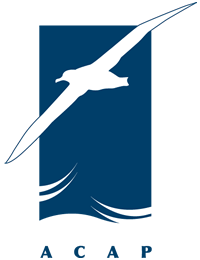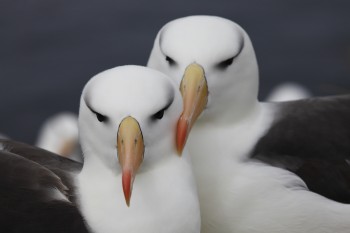Still going strong and looking good. A 44-year old banded Wandering Albatross is photographed at sea

Wandering Albatross in flight with band W426 visible on its right leg
On an Eaglehawk Neck pelagic trip off the south-eastern coast of Tasmania on 27 May 2024, a colour-banded (White 426) Wandering Albatross Diomedea exulans was photographed at sea by Jeran Lin and Hsao Hsien Lai.
The Australian Bird and Bat Banding Scheme (ABBBS) reported that the bird was banded as a chick at Bauer Bay, Macquarie Island in August 1980 and, at was thus nearly 44 years old (calculated from fledging). The bird is a male, and has been a successful breeder, raising 12 chicks.

Wandering Albatross W426
The bird is the second-oldest known Wandering Albatross in the ABBBS database. The oldest record is of a beach-cast bird found at Mceacherns Beach, Yorke Peninsula, South Australia in January 2006. The bird was banded with FBS19095 in January 1962, 44 years earlier, at the French Crozet Islands in the southern Indian Ocean.
Albatross studies on the Crozet Islands are undertaken in the framework of the project “Seabirds and Marine Mammals as Sentinels of Global Change in the Southern Ocean” (Project: 109 ORNITHO2E), supported by the French Polar Institute Paul Emile Victor (IPEV).
Information from the Seabirds and Pelagics Australia Facebook page and the ABBBS. With thanks to Karine Delord.
31 July 2024, updated 01 August 2024

 English
English  Français
Français  Español
Español 
 Figure 1 from the paper: Five southern giant petrels (Macronectes giganteus) feed on a dead juvenile Magellanic penguin (Spheniscus magellanicus) in the waters off of Punta Tombo, Argentina, site of a large penguin colony. Note how the two birds actively eating the penguin have their wings outstretched, and the bird on the right further has raised and fanned its tail. Note also the plumage variations among the birds, from wholly brown (likely juvenile or immature) to one with a whitish head (an adult). Photograph by Dee Boersma.
Figure 1 from the paper: Five southern giant petrels (Macronectes giganteus) feed on a dead juvenile Magellanic penguin (Spheniscus magellanicus) in the waters off of Punta Tombo, Argentina, site of a large penguin colony. Note how the two birds actively eating the penguin have their wings outstretched, and the bird on the right further has raised and fanned its tail. Note also the plumage variations among the birds, from wholly brown (likely juvenile or immature) to one with a whitish head (an adult). Photograph by Dee Boersma.

